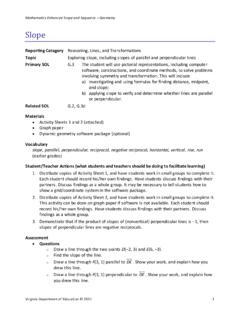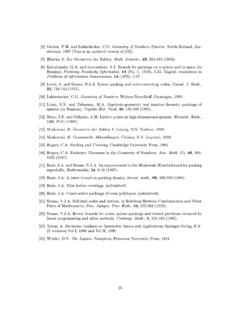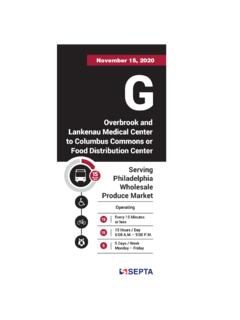Transcription of Yes, r > g. So What? - Harvard University
1 43 American Economic Review: Papers & Proceedings 2015, 105(5): 43 47 , r > g. so what ? By N. Gregory Mankiw** Department of Economics, Harvard University , Cambridge, MA 02138 (e-mail: I am grateful to Laurence Ball, Ben Friedman, David Laibson, Lisa Mogilanski, Lawrence Summers, Gabriel Unger, and Matthew Weinzierl for comments. Go to to visit the article page for additional materials and author disclo-sure Piketty s book Capital in the Twenty-First Century captured the public s attention in a way that few books by econo-mists have. Though its best-seller status was a surprise, probably even to its author, it has the ingredients that foster wide appeal.)
2 The book addresses a pressing issue of the day in a man-ner that is learned, literary, speculative, provoc-ative, and fascinating from beginning to end. While largely a work of economic history, it does not stop there. Piketty ultimately leads the reader to a vision of what the future may hold and advice about what policymakers should do about it. That vision is a dystopia of continu-ally increasing economic inequality due to the dynastic accumulation of capital, leading to a policy recommendation of a steeply progres-sive global tax on I admire Piketty and his book, I am not persuaded by his main conclusions. A chain is only as strong as its weakest links, and several links in Piketty s chain of argument are espe-cially fragile.
3 Other aspects of Piketty s book may well pass the test of time, but the bottom line his vision of the future and the consequent policy advice most likely will book documents that the rate of return on private capital r exceeds the economy s growth rate g, and it argues that this will likely con-tinue to be the case, perhaps by a larger amount in the future. Piketty (2014, p. 571) boldly calls this fact the central contradiction of cap-italism. He reasons that if r > g, the wealth of the capitalist class will grow faster than the incomes of workers, leading to an endless inegalitarian spiral (p. 572). To someone who views relatively unfettered capitalism as one of the great achievements of human history and the best way to organize a society, as I do, these conclusions present a significant first thing to say about Piketty s logic is that it will seem strange to any economist trained in the neoclassical theory of economic growth.
4 The condition r > g should be familiar. In the textbook Solow growth model, it arrives naturally as a steady-state condition as long as the economy does not save so much as to push the capital stock beyond the Golden Rule level (Phelps 1961). In this model, r > g is not a problem, but r < g could be. If the rate of return is less than the growth rate, the economy has accumulated an excessive amount of capi-tal. In this dynamically inefficient situation, all generations can be made better off by reduc-ing the economy s saving rate. From this per-spective, we should be reassured that we live in a world in which r > g because it means we have not left any dynamic Pareto improvements is, moreover, good reason to doubt that r > g leads to the endless inegalitarian spiral that Piketty describes.
5 Imagine a wealthy person living in an r > g economy who wants to ensure that he has an endless stream of wealthy descen-dants. He can pass his wealth on to his chil-dren, but to ensure that his descendants remain wealthy, he faces three , his heirs will consume some of the wealth they inherit. For this purpose, the rele-vant measure of consumption includes not only food, shelter, and riotous living but also political and philanthropic contributions, which can be sizable for wealthy families. A plausible esti-mate of the marginal propensity to consume out of wealth, based on both theory and empirical evidence, is about 3 percent. Thus, if wealth earns a rate of return of r, wealth accumulates at a rate of about r , as wealth is passed down from gen-eration to generation, it is divided among a growing number of descendants.
6 (This would not be a problem for the wealthy patron if his MAY 201544 AEA PAPERS AND PROCEEDINGS heirs mating were perfectly assortative that is, if they all married someone of equal wealth. But matters of the heart are rarely so neat.) To get a rough calibration of this effect, suppose everyone has a typical family of two children, so the number of descendants doubles every generation. Because generations are about 35 years apart, the number of descendants grows at a rate of 2 percent per year. Thus, if family wealth accumulates at a rate of r 3, wealth per descendant grows at a rate of r , many governments impose taxes on both bequests and capital income.
7 In the United States today, the estate tax rate is 40 percent (above a threshold). In Massachusetts, where I live, the state imposes an additional estate tax with a top rate of 16 percent. As a result, at the margin, about half of a family s wealth is taxed away by the government once every generation. If we again assume a generation is 35 years, then estate taxation reduces the accumulation of dynastic wealth by about 2 percent per year. In addition, capital income taxation during a person s life reduces capital accumulation even further. This effect is roughly an additional 1 percent per year, making the total drag of taxes about 3 percent per year.
8 Let s assume, however, that our dynasty has especially good tax plan-ning and put the total tax effect at only 2 percent. Thus, taking taxation into account, wealth per descendant grows at a rate of about r can now recalibrate Piketty s logic taking these three effects into account. Piketty reasons that resources of the wealthy would grow rela-tive to the labor income if r > g. We can now see, however, that this condition is not sufficient once consumption, procreation, and taxation are accounted for. Instead, to obtain the worrisome endless inegalitarian spiral, we would need the return on capital r to exceed the economy s growth g by at least 7 percentage points per scenario is far from what we have expe-rienced.
9 Piketty estimates the real rate of return to be about 4 or 5 percent, which seems plausi-ble for a typical balanced portfolio. Meanwhile, the average growth rate of the US economy has been about 3 percent. So Piketty is right that r has exceeded g, but it has done so by only about 2 percentage points, not the more than 7 percent-age points necessary for the creation of Piketty s imagined , while economists are notoriously bad at predicting the future, especially over long horizons, it seems unlikely that, looking for-ward, r will start exceeding g by more than 7 percentage points. If the real return remains sta-ble at 5 percentage points, the economy s growth rate would need to become a negative 2 percent.
10 Secular stagnation would not be enough; we would need secular decline. Alternatively, if future growth is 2 percent per year, the real rate of return to capital would need to rise from its historical 5 percent to more than 9 percent. That figure is nowhere near the return that pension and endowment managers are now projecting from a balanced portfolio of stocks and , the forces of consumption, procre-ation, and taxation are, and will probably con-tinue to be, sufficient to dilute family wealth over time. As a result, I don t see it as likely that the future will be dominated by a few families with large quantities of dynastic wealth, passed from generation to generation, forever enjoying the life of the suppose I am wrong.



















